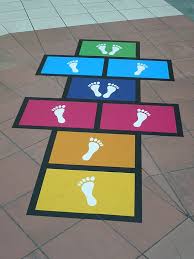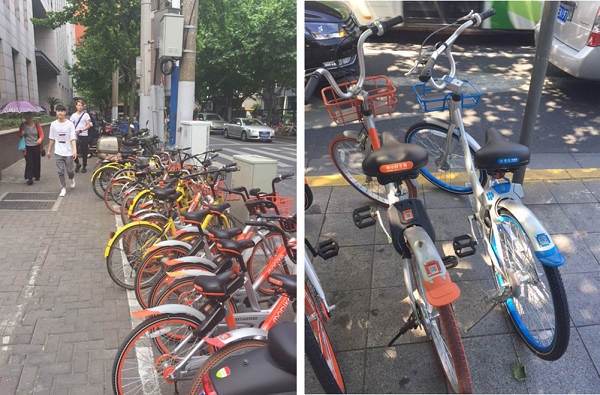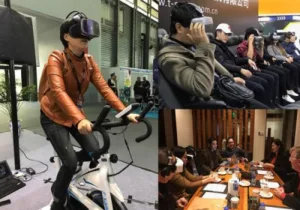![]() I found myself near the broad waters of the Yangpu river during the late springtime, mindfully pondering the crossroads of opposites that is today’s Shanghai. Earlier, I gave a TEDx talk about virtual-reality at the Caohejing Hi-Tech Park Innovation Center. At the end of my visit, I spoke to a group of parents at a prestigious Chinese school about trends in U.S. technology for schools. Between these bookends, I listened, learned, questioned and observed.
I found myself near the broad waters of the Yangpu river during the late springtime, mindfully pondering the crossroads of opposites that is today’s Shanghai. Earlier, I gave a TEDx talk about virtual-reality at the Caohejing Hi-Tech Park Innovation Center. At the end of my visit, I spoke to a group of parents at a prestigious Chinese school about trends in U.S. technology for schools. Between these bookends, I listened, learned, questioned and observed.
Old versus New
Peering across the Yangpu, my eyes tracking from the older and proper architecture of the Bund to the futuristic skyscrapers of the Pudong area, I realized that Shanghai, and in many ways China, have both engines purring along nicely. By that I mean their performance engine—their huge ability to produce basic goods, services, structures and infrastructure– and their innovation engine—the agility to innovate, redefine, redesign, retool and reinvent—are alive and well. I wonder how many companies in the display industry are good at one or the other, but not both skill sets. It also made me wonder why education in both countries has clung so desperately to older models, only making token obeisance to modern reforms.
 Old and New in Shanghai
Old and New in Shanghai
 Virtual Reality in Shanghai
Virtual Reality in Shanghai
Big and Small
Without doubt, Shanghai is truly a city of displays. From the ubiquitous smart phones in the hands of young people to the advanced automotive displays in so many vehicles to the number of smartwatches on keenly fashionable wrists, displays are a part of the fabric of Chinese life. From subway tunnel movies and extensive digital signage to the mind-blowing “Big Canvas” displays at the Bund, Shanghai plays second fiddle to no one. But these display technologies produce different effects on us: the “Big Canvas” somehow forces us to feel small, unknowing, and ant-like; the personal display conversely seems to empower us, connect us, and give us social meaning. But both have their purpose.
 Taking in Shanghai’s “Big Canvas”
Taking in Shanghai’s “Big Canvas”
Paying Shanghai
 While standing in a tiresome queue, I noticed on the floor beside me a painted hopscotch area, designed to capture the attention of impatient children. In the egregious lines that pepper Shanghai, or for that matter any large city, such a playful distraction makes great sense. What will children do when they see this? Of course, they will skip, hop and jump. And that’s a metaphor for what has happened in Shanghai.
While standing in a tiresome queue, I noticed on the floor beside me a painted hopscotch area, designed to capture the attention of impatient children. In the egregious lines that pepper Shanghai, or for that matter any large city, such a playful distraction makes great sense. What will children do when they see this? Of course, they will skip, hop and jump. And that’s a metaphor for what has happened in Shanghai.
In my previous trip to Beijing, I learned to depend on my credit card and my ATM debit card. This time, doing so was a big mistake. In the spirit of “skip, hop and jump” Shanghai has skipped rapidly towards purchasing and commerce apps like WeChat Wallet and AliPay, bypassing or hopping the bank fees and queues of credit and ATM cards. Nearly every young person I met or observed used their smart phone to pay for anything and everything, schedule anyone or any service, and to avoid lines of people or their gatekeepers. In the US, I have witnessed only a small segment of youthful Seattle or LA operate in this fashion, and not to this extent. With this development, small displays have now attached themselves—or rather merged—with the daily or habitual economic actions and behaviors of the masses. A jump.
Scaling Shanghai
My musings from the banks of the Yangpu also led me to appreciate the agility and scalability of the Shanghai economic engine, a lesson for all of us. Personal transportation has always been a wicked challenge in Shanghai. Still, the sudden explosion of digitally accessed “bikes for hire” at 1 rmb per half hour, along with the emergence of newer electric bikes, was a true lesson in scalability, mobile convenience, and addressing pain points. In just a year and a half, according to residents, Shanghai pushed the proverbial pedal from 0 to 60, in terms of both quantity of available bikes and mobile-based ease of payment. There’s just nothing like it. How fast are you?
 Bikes for rent–digitally, of course
Bikes for rent–digitally, of course
Although one wonders if Shanghai isn’t just window dressing for the rest of China, these gleanings and the object lessons they create for the display industry are indeed thought provoking.—Len Scrogan

